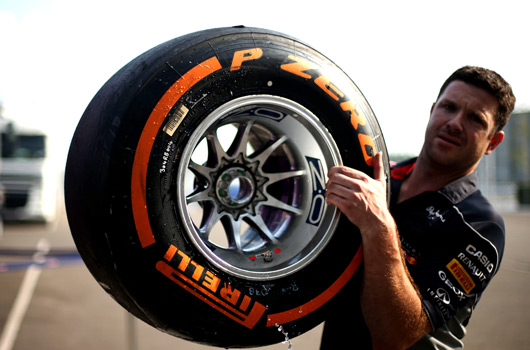Since the exploding tyre dramas of the British Grand Prix we’ve been told teams had mounted tyres the wrong way around, that the teams are too paranoid and threats of a driver boycott prior to the German Grand Prix.
That culminated in hastily arranged test of newly created tyres (2012 carcass, using 2013 compounds) spliced into the recent young driver testing at Silverstone.
So, in their official video preview (available below) of this weekend’s Hungarian Grand Prix you’d reckon Pirelli would mention something about the new tyres. Even if these videos were produced months ago you’d reckon they’d be able to edit the voiceover. Apparently not.
In the pre-race press release, though, we do get some acknowledgement.
“Hungary marks the first event for our latest specification P Zero tyres, which consist of the 2012 construction matched to the 2013 compounds,” confirmed Paul Hembery. “These tyres were tried out by the teams at Silverstone during the young driver test, who benefitted from the opportunity to adapt the set-up of their cars to best suit the new tyres.”
Hembery goes on to discuss some of the features of the Hungaroring circuit. “Now they get to use them in competition for the first time, and with qualifying particularly important at the Hungaroring, the work done in free practice will be very important,” he added. “Overtaking at this circuit is never an easy task, so the teams will be looking to use strategy to maximise their opportunities to gain track position.
“The selection of medium and soft tyres should provide plenty of chances to help them do that, based on the data that all the teams gain with different fuel loads in free practice. Temperatures in Hungary can be very high, and this is the other factor on which the levels of wear and degradation experienced will depend.
“Traction and braking are two critical aspects of tyre performance in Hungary, with the teams running a set-up designed to emphasise these key areas. With levels of lateral energy relatively low, tyre performance rather than durability will be the limiting factor and this will form the basis of the strategy selected—with the teams aiming to keep the tyres within the peak window of operating performance for as long as possible.
“The design of our latest tyres should help them to do this.”
